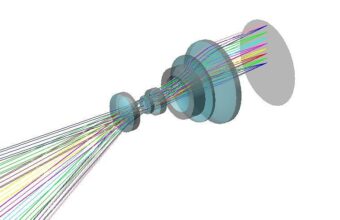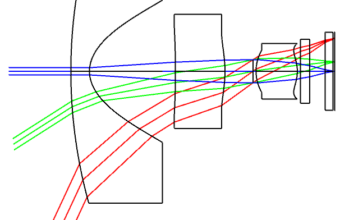What Problems Do Spherical Lenses Have?
.jpg)
.jpg)
.jpg)
Lenses come in a variety of shapes, but the most popular of them all is the spherical lens. It is a lens in which both surfaces are spherical. Despite its popularity, spherical lenses inevitably have a problem called “aberration,” which causes blurring and distortion of the image.
Here, we will explain the types and characteristics of spherical lenses and the problems that relate with spherical lenses.
Principles of Light Collection, Divergence and Classification of Lenses by Surface Type
There are many different types of lenses. They can be broadly classified as the following according to the principle of light focusing and divergence and the type of surface.
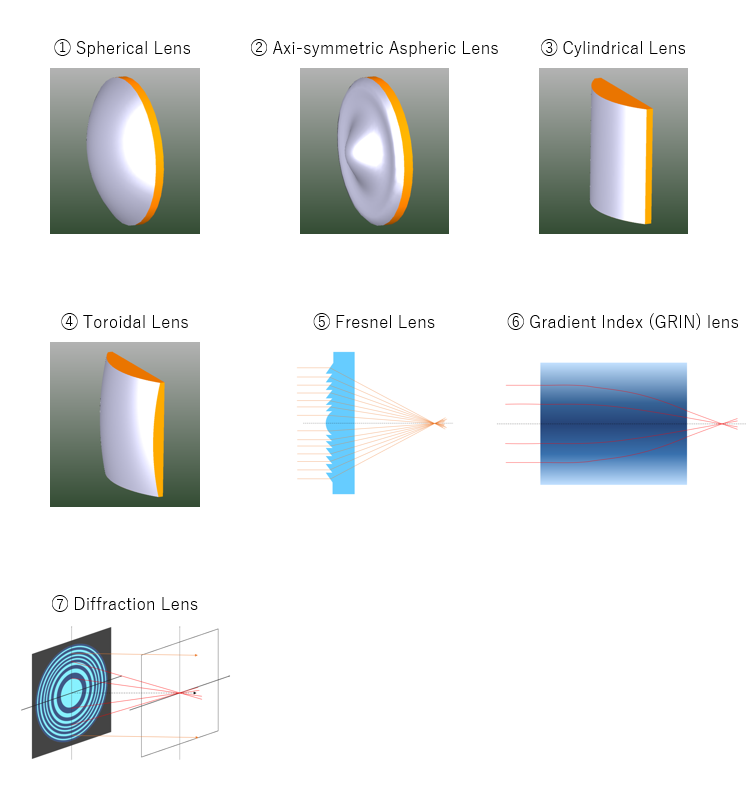


Lenses ① to ⑤ are lenses that have a focusing and diverging effect solely due to refraction on the lens surface. Of these, lenses ① to ④ have a continuous smooth surface, while lens ⑤ has a lens surface that is divided into discontinuous zones.
On the other hand, in the case of ⑥, the refractive index inside the lens is not homogeneous but distributed, and in the case of ⑦, light is focused and diverged by using the diffraction effect on the surface instead of refraction.
Classifying Lenses by Cross-sectional Shape
There are various types of lenses that have a focusing and diverging effect only by refraction on the lens surface and also have a continuous smooth lens surface. They can be classified by the cross-sectional shape of the lens as follows;
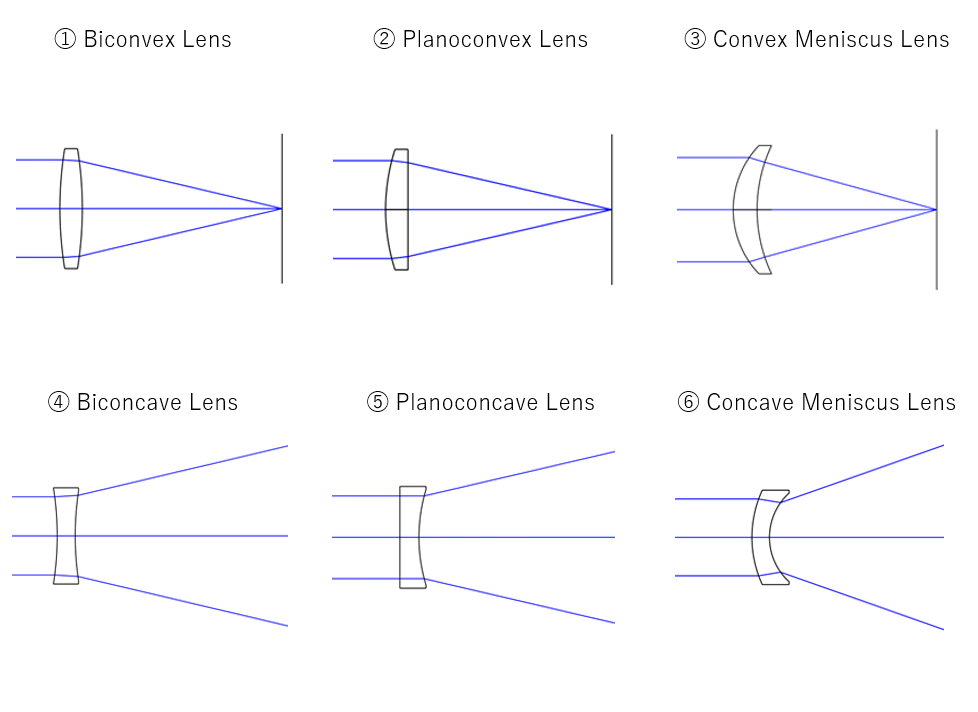


Of these above, ① to ③ are classified as convex lenses and ④ to ⑥ are classified as concave lenses. A convex lens focuses light, while a concave lens diverts it. A ①biconvex lens is one in which both surfaces are convex. Similarly, ④biconcave lenses have concave surfaces on both sides. ②Plano-convex lenses and ⑤plano-concave lenses are lenses that have convex and concave surfaces on one side, respectively, but flat surfaces on the other side.
A meniscus lens is a lens with a crescent-shaped cross-section. One side of the lens is convex and the other side is concave. Both convex and concave meniscus lenses seem to have the same shape, but the difference is that the center of the lens is thicker in convex meniscus lenses and the periphery of the lens is thicker in concave meniscus lenses. Whether the center of the lens is thicker or the periphery is thicker is what distinguishes convex lenses and concave lenses, with lenses ① to ③ having a thicker center and lenses ④ to ⑥ having a thicker periphery.
Problems with Spherical Lenses
A spherical lens is a lens in which both surfaces of the lens are made of spheres. Spherical lenses are often used in all kinds of situations. The reason why It is so popular is that they are relatively easy to process. In glass lenses, each lens surface is polished to make a smooth surface, but in the polishing process, spherical and flat surfaces are inexpensive and easy to secure accuracy. As stated above, spherical lenses are relatively easy to process, but there are some problems.
Aberration
When a spherical lens is used, aberration inevitably occurs. Aberration is a phenomenon in which the image formation position of a ray of light passing through the center of the lens is different from that of a ray of light passing through the edge of the lens. Therefore, when the lens is used for imaging purposes, blurring and distortion will occur, making it difficult to obtain the desired image.
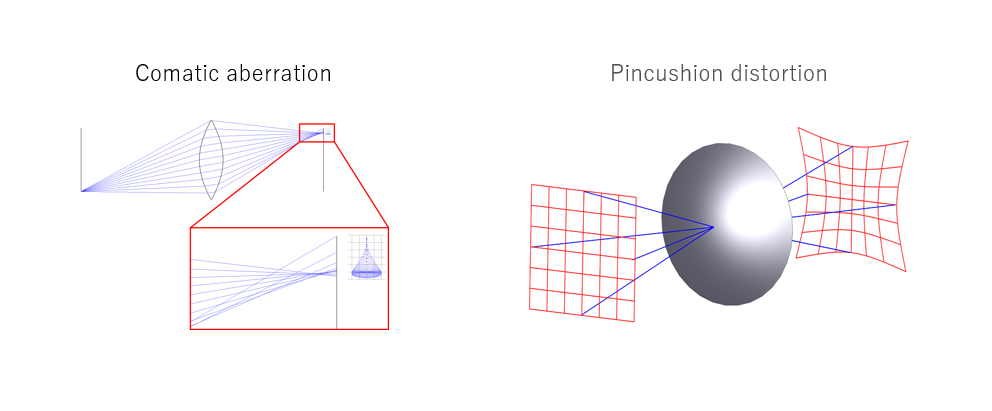


Multiple lenses are needed
In order to reduce this aberration, a combination of multiple spherical lenses is used in imaging applications. Aberrations are reduced by appropriately selecting and arranging the cross-sectional shapes ① to ⑥ described above, and optimizing parameters such as lens thickness, material, and radius of curvature of each sphere.
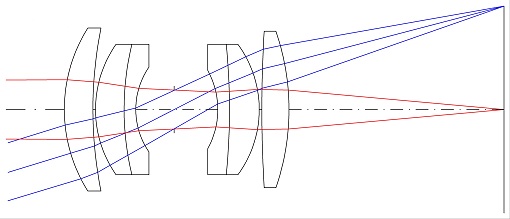


However, if only spherical lenses are used, the number of lenses increases, which takes up more space, makes the lens heavier, and costs more.
That’s where aspherical lens comes in.
>>What is an Aspherical Lens?About its Features and Benefits
Optical Design Technology Navigator will solve all your needs for spherical / aspherical lens!
TOYOTEC, operator of the Optical Design Technology Navigator, is an all-around optical manufacturer with proficiency in optical, mechanical, and electronical technology. We ca design and develop products from scratch based on our customers’ needs, and provides integrated support from design to productization. In addition to high-precision spherical lens processing, we are also capable of manufacturing even higher-precision aspherical lenses. In addition, we offer one-stop services from design to manufacturing of the entire lens unit, including peripheral parts, and not just the lens itself.
If you are thinking about something like, “If only there was a product like this…”, or, “Is it possible to do these kind of things with lenses?”, Optical Design Technology Navigator, a website operated by a group of optical design professionals, is the place to go. If you have any questions about optical design, please feel free to contact us at Optical Design Technology Navigator.
 JP Phone: 0533-85-3000
JP Phone: 0533-85-3000


